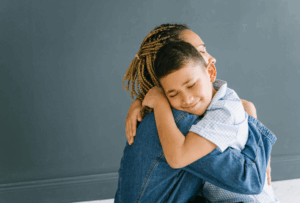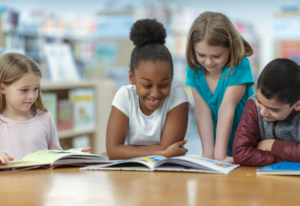By Karen Conley, President, CEO and founder of Charity for Change
Understanding our own emotions and the reasons behind them can be challenging for us, as adults, to comprehend and manage. Just imagine how difficult it is for children and adolescents to do the same when they do not have the education and life experiences you and I have.
Emotional literacy is not something we are born with. Recognizing our emotions and expressing them in a positive, healthy way are actions we had to learn and put into practice, as well as how to identify and react to the emotions of others. It is up to us as educators, caregivers, friends, and community members to help young people navigate their emotions. So, how do we begin?
All Emotions Are Acceptable to Feel
Emotions are information from our brain telling us how to feel, think, behave, or react to an experience. Therefore, there are no good or bad emotions. It is how we deal with and respond to emotions that make a difference in how we interact with ourselves and those around us.
Starting early, it is essential to validate a child’s emotions by helping them name their feelings, understand why they are feeling that emotion, and talk through how to respond. When a child responds in a negative way to their feelings, help them through the process:
- Have a child take deep breaths. Not only will this help them calm down, but it will also help draw attention and awareness to the emotions they are feeling.
- Ask them to name what they are feeling specifically. Are they mad, frustrated, sad, or something else? All three are very different feelings but can have similar reactions, so don’t make assumptions.
- Ask them what they want to do about their feelings. Be ready to make healthy suggestions such as taking a walk, drinking water, taking more deep breaths, or taking a break.
- Once the child has calmed down, this is an excellent time to discuss what happened. Talk about what they were feeling, why they felt that way, and some ways they can cope with those emotions in the future.
Helping a child through an adverse reaction is an opportunity for them to connect the dots so they can understand their response and why you are asking them to respond differently, especially if they reacted in a way that could hurt themselves or others. By teaching children self-awareness, we are helping them build empathy.
The Power of Empathy & Kindness
Empathy is the ability to relate to another person by understanding their feelings. Research has shown that cultivating this interpersonal skill can help children academically and socially and affect their health, happiness, and relationships into adulthood.
Children that have high empathy are prone to being kind. Acts of kindness can benefit the giver and receiver by improving mental health, heart health, and energy, and decreasing stress, anxiety, and depression. Another benefit of empathy and kindness is that both play a part in preventing bullying.
October is National Bullying Prevention Awareness Month. It is a well-known fact that bullying, including cyberbullying, is escalating among children and adolescents. There are many different factors and reasons for bullying, and bullying does not just affect the victim. It is a social issue that affects the victim, the offender, and the witnesses. Furthermore, a child’s role as a victim, a bully, or a bystander may change from day to day, which is why it is imperative that we help children understand their behavior and the emotions of others.
Integrating a social-emotional learning (SEL) program in grade school can help children learn and apply empathy and kindness. SEL program content teaches students conflict resolution, decision-making, and problem-resolution strategies so they can effectively respond to disagreements. These skills strengthen a child’s ability to communicate with empathy and care about others, as well as control any aggressive impulses. Additionally, children learn how to respect the differences in others, leading to healthy friendships and strong relationship-building skills. All these elements can help schools and communities become safer and more inclusive environments.
Promote Empathy to Prevent Bullying
There are a few different ways educators can promote empathy as part of an effort to prevent bullying. Some potential strategies include:
- Teach empathy and kindness. Kindness may seem simple, but it is a behavior that needs to be taught and practiced. Find ways to help children come together and talk about their differences. This could be through working together to solve a problem, practicing conflict resolution, or learning more about one another’s backgrounds. When you see kindness, acknowledge it to validate the behavior to encourage a child’s empathy and compassion.
- Foster connections. When students feel part of a community and connected to their peers, it can help improve positive communication and the ability to cope with stress. Children feel more confident and comfortable standing up to potential bullying behavior by having a safe place to express themselves and be heard. Encourage students to nurture their interests and hobbies by participating in after-school or weekend group activities.
- Art is a powerful tool. Whether it is music, painting, drama, or writing, art can be a great conduit to help students express their emotions and appreciate the feelings of others. Sharing their creations with one another can help children visualize different perspectives in new ways, improving their empathy while building their self-esteem and self-awareness.
These strategies can also be applied at home and in other community environments to help our children grow into healthy, happy, well-rounded adults.
About the Author
Karen Conley is President, CEO and founder of Charity for Change, a non-profit social-emotional learning educational organization funded by philanthropy. For information, visit charityforchange.org.





